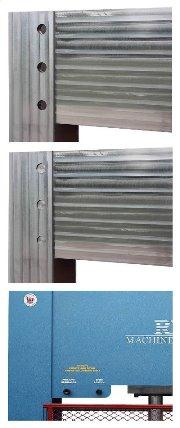The machining process has been around for ages with simple tools and techniques dominating this intriguing metal working process. Machining utilizes the subtractive manufacturing approach to transform raw materials, largely metals, into their preferred end products within a closely monitored material removal process. In recent years the process, as well as the tools, have undergone a notable face-lift so as to stay at par with the evolving technology and the changing demands of today's consumer. Machining has become much more intricate and exact through the use of tools like the
hydraulic press.
A closer look at the common machining processes
Although machining processes fall into many categories, the commonest of these are milling, turning, drilling and boring. For a machinist to deliver quality work, they must have a sharp eye for fine details and precision in their craft. Diligence and careful manipulation of materials as well as the use of cutting-edge tools is called for in order to eliminate wastage and 'second class' finished products.
Milling
With the use of a milling machine, materials are advanced through an attached milling cutter (with multiple cutting edges) at regular intervals, in the end producing revolution marks on the surface, and a rather uneven surface due to appearance of regular ridges. The size, power source and method of control determine the classification of a milling machine (either vertical or horizontal).
Integrating hydraulic presses into machining
A rather smart investment, hydraulic presses lighten the workload and delivers faster results with precise finishing effects for most machining endeavors. Working with metal is made easier as
shop presses aid in molding, bending, stamping and crushing as needed. Technology advancement has made today's shop presses more effective and efficient in delivering exquisite products and finishes.
Turning
Straight turning, taper turning, profiling as well as external grooving are the major turning processes performed using a lathe, making it a very dynamic machining process with varied finishing effects, such as straight, conical, curved or grooved work pieces. Turning is primarily performed with a single-point cutting tool which can either be operated manually or with the integration of technologies such as the now commonly used automated Computer Numerical Control (CNC).
Drilling
With the diligent use of a drill bit, which is a rotary cutting tool, circular cross section holes can be drilled on either metal or any other solid materials, such as wood and hard plastics. Drilling, although primarily used to cut holes, it also used in the enlargement of previously drilled holes, a function that draws some similarity to the boring process. Square cross sectioned holes can be achieved with the use of specialized drill bits.
Boring
This machining process calls for precision and accuracy to deliver quality finish. With the use of specialized boring tools such as the jig borers, a machinist is able to coordinate dimensioning and achieve fast production without labor intensity. Boring is used as a general process of magnifying previously drilled holes to meet design specifications as well as to enhance product function. Line-boring and back-boring are the main types being utilized in today's machining world.
 Français
Français
